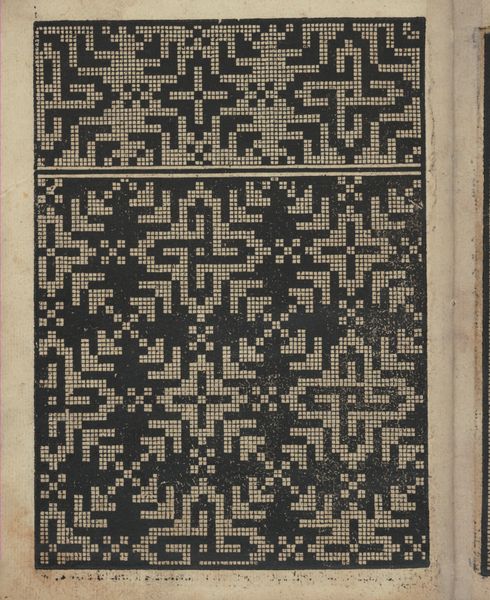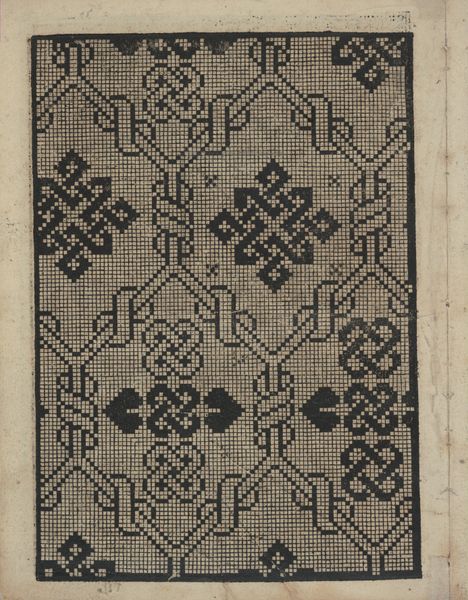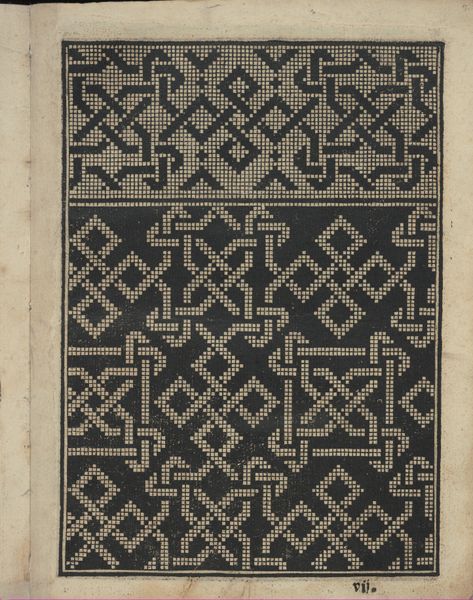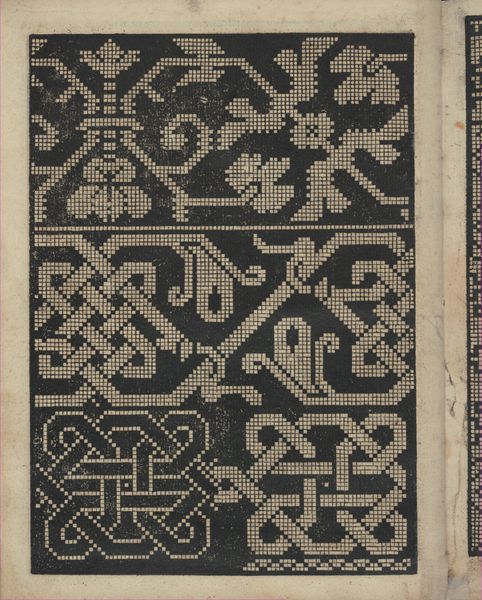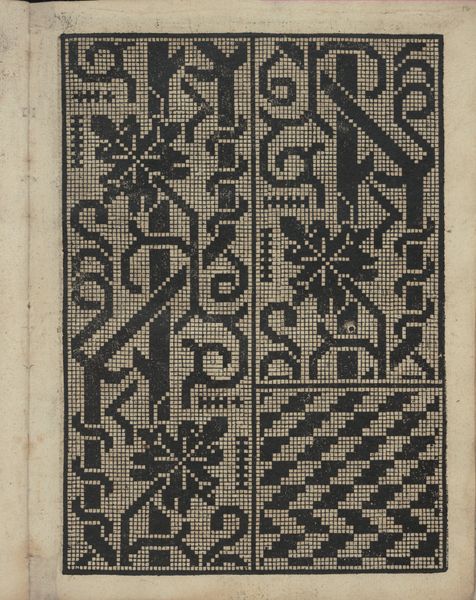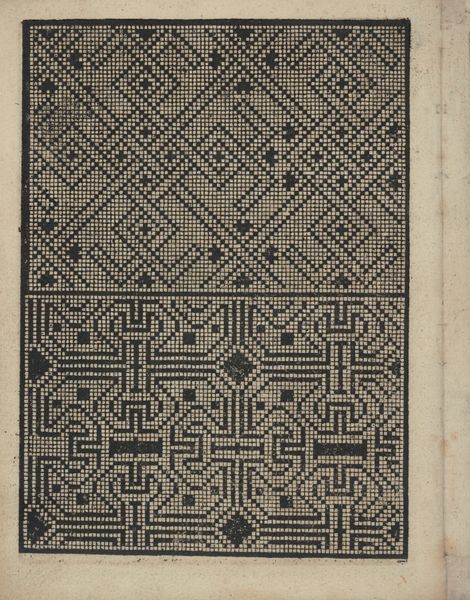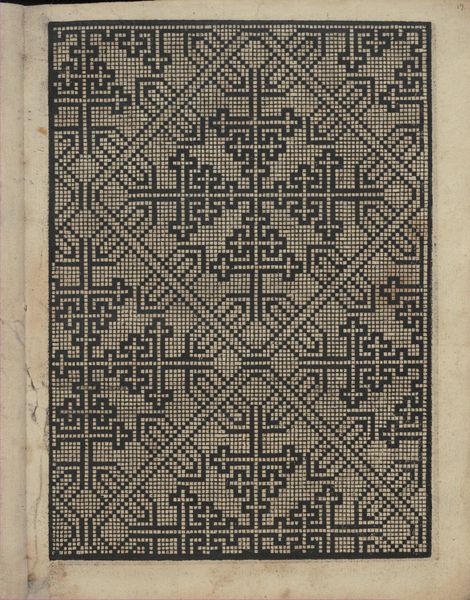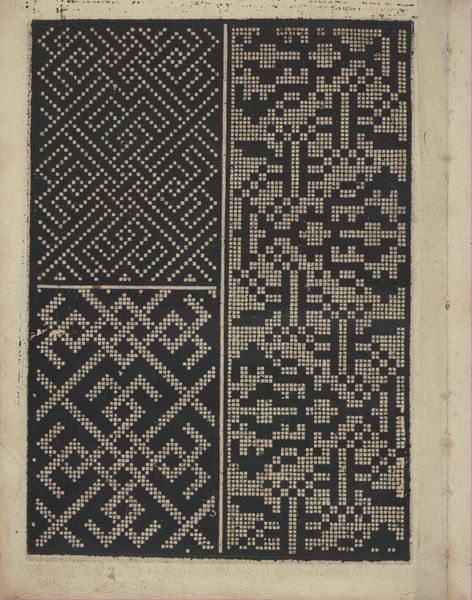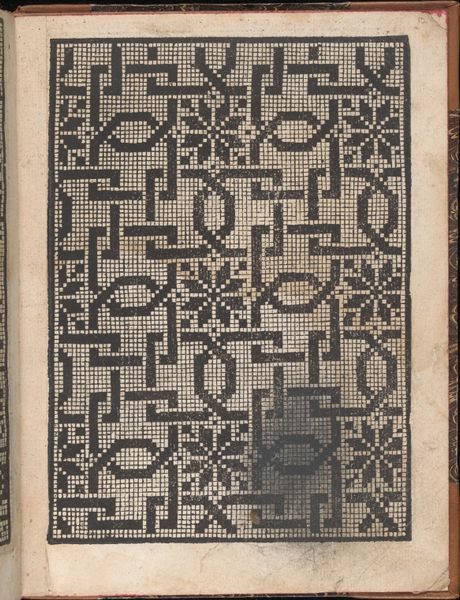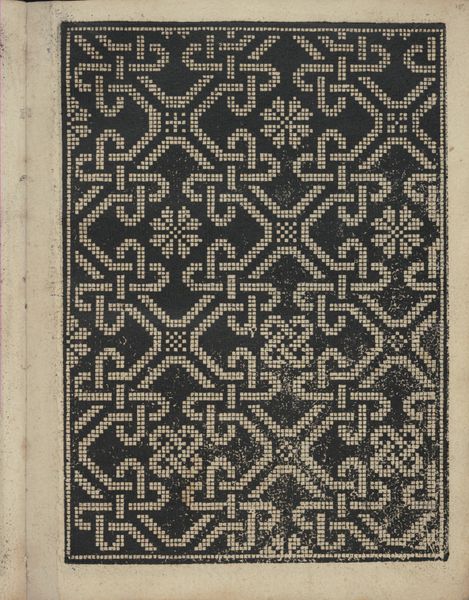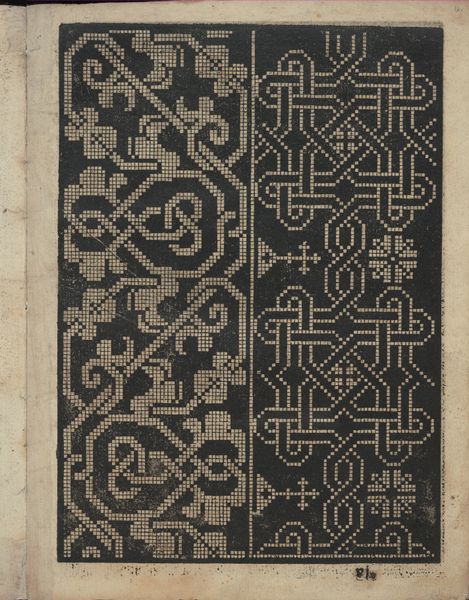
Libbretto nouellamete composto per maestro Domenico da Sera...lauorare di ogni sorte di punti, page 5 (verso) 1532
0:00
0:00
drawing, graphic-art, print, paper
#
drawing
#
graphic-art
#
medieval
# print
#
book
#
paper
#
geometric
Dimensions: Overall: 8 1/16 x 6 5/16 in. (20.5 x 16 cm)
Copyright: Public Domain
Curator: At first glance, this medieval drawing offers a hypnotic quality in its stark contrasts and labyrinthine lines. What do you make of it? Editor: Well, the item before us is actually a page from Domenico da Sera's *Libbretto nouellamete composto per maestro Domenico da Sera…lauorare di ogni sorte di punti,* created in 1532. It is an early example of a pattern book, a guide for creating needlework, and is part of the Metropolitan Museum of Art's collection. These manuals helped to democratize design. Curator: Democratization! I see the implications immediately. Here, this seemingly simple page offers crucial insight into the domestic lives of Renaissance women and the role of craft in shaping social structures. Needlework wasn't simply decorative; it was a language, a means of self-expression and cultural transmission in a world that often silenced women's voices. This little book empowered. Editor: Intriguing points, and consider also the formal arrangement: two distinct registers, a frieze above, with the field below. This structural division gives a satisfying sense of balance, a formal elegance befitting geometric order. What meaning could we discern from such internal relations of part to whole? Curator: The geometric patterns signify more than simple decoration. Consider the symbolism inherent in repeated motifs – diamonds, crosses. These symbols might represent fertility, protection, or religious beliefs, embedded within the fabric of daily life and passed down through generations. Understanding this symbolism allows us to engage in an intercultural dialogue, seeing parallels with textile traditions in other parts of the world. Editor: I grant it holds a subtle charm beyond its functional nature as a mere guide. But I think focusing primarily on historical use could obfuscate this artist’s conscious aesthetic choices; it reduces artistic merit. It seems the maker's careful management of line and shape, the interplay of dark and light are quite powerful here. Curator: Perhaps both approaches give merit. The drawing itself and its purpose as a practical instrument can coexist. By engaging art history and theory, while remaining sensitive to historical, gender, race and class dynamics we enrich the narrative beyond the immediate object. Editor: Fair enough; after this discussion I am swayed, a work of great interest whichever approach the visitor prefers.
Comments
No comments
Be the first to comment and join the conversation on the ultimate creative platform.
